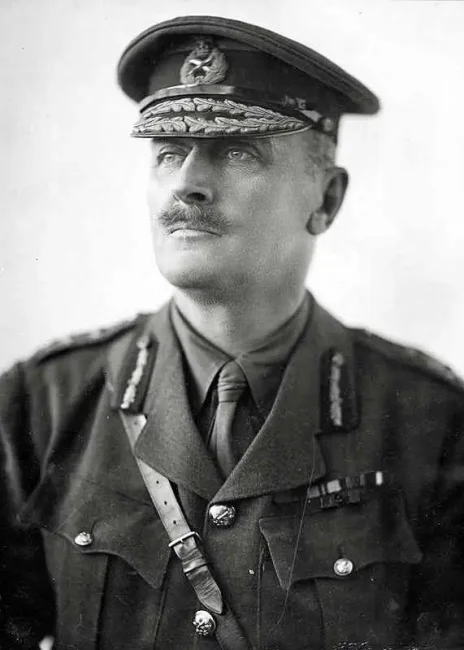- Military History
- Biographies
- Militarians Biographies
- Field Marshal Edmund Henry Hynman Allenby
Field Marshal Edmund Henry Hynman Allenby
One of Britain’s best field commanders in World War I, Allenby oversaw operations in the Middle East
Allenby was born in Nottinghamshire and joined the Inniskilling Dragoons in 1882. With this unit, he served in the Bechuanaland (Botswana) expedition of 1884-85. At the turn of the century, during 1900-1902 he saw service in the Second Anglo-Boer War on the staff of Lord Kitchener and in the field. In 1902, he returned to England to command of the Fifth Lancers (1902-1905).
At the outbreak of World War I, Allenby was put in command of the cavalry division (later the cavalry corps) of the British Expeditionary Forces (BEF) during August–November 1914. He then commanded V Corps before receiving a promotion to command of the Third Army in October 1915. He performed brilliantly in the Arras offensive during April 9-15, 1917, but his individualistic style and boldly aggressive methods were not popular with the British high command.
He was removed from the Western Front, the war's principal theater, and sent to the Middle East in June 1917, as a replacement for Sir Archibald Murray as commander of British forces in Egypt. Allenby's arrival immediately boosted the morale of troops in this backwater of the war, and he set about with great energy to take the offensive by concentrating his forces against the Turkish inland flank. On October 31, he scored a signal victory in the Third Battle of Gaza, executing a surprise attack at Beersheba, then brushing aside Turkish resistance in a headlong advance on Jerusalem. His attack on the Turkish position at Junction Station during November 13-15 was a masterpiece that resulted in a Turkish rout and the capture of a crucial water supply. At last, on December 8, Allenby made an all-out assault on Turkish defenses in front of Jerusalem. After two days of combat, he entered the Holy City.
Unfortunately for Allenby, the demands of the European war drained off many of his troops and, during 1918, he could not continue his advance. His attempt to take Amman tailed twice, during March 20-25 and April 30 – May 3. However, after he belatedly received reinforcements, he resumed the offensive during July and August, using anti-Turkish Arab guerrilla troops as a diversion while he launched his main offensive near the coast. This achieved total surprise, and Allenby could smash the Turks' front line at Megiddo during September 19-21. Maintaining his momentum, he pursued the fleeing Turks from September 22 to October 30. During this pursuit, he took Damascus (October 1), Horns (Hims; October 16), and Aleppo (October 25).
Fighting in an often-neglected theater of the Great War, Allenby scored such sweeping victories in Palestine and Syria that Turkey withdrew from the war on October 30, 1918. That very month, Allenby was made a viscount and the following year was named high commissioner for Egypt. He served in this capacity until 1925. Even though he had fought for much of the war on a secondary front, Allenby was recognized as one of the great generals of World War I and one of England's most accomplished commanders.
Field Marshal Edmund Henry Hynman Allenby - Quick Facts
- 1st Cavalry Division (British Army)
- 4th Cavalry Brigade (British Army)
- 5th Royal Irish Lancers (British Army)
- 6th (Inniskilling) Dragoons (British Army)
- British Third Army
- Cavalry Corps (British Army)
- Egyptian Expeditionary Force (British Empire 1916-1919)
- V Corps (British Army)
- Second Boer War (11 October 1899 – 31 May 1902)
- WWI (1914-1918)
- {{#owner}}
- {{#url}} {{#avatarSrc}}
{{name}} {{/url}} {{^url}} {{#avatar}} {{& avatar}} {{/avatar}} {{name}} {{/url}} - {{/owner}} {{#created}}
- {{created}} {{/created}}
























